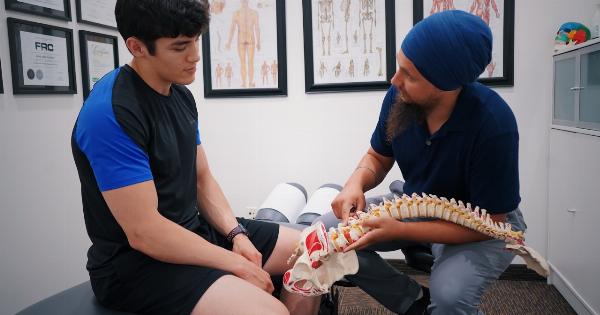Spinal cord injuries can be debilitating, life-altering and expensive to treat. They can impact a person’s quality of life in multiple ways, including physical, emotional and financial.
When it comes to receiving medical treatment and getting the necessary assistance, understanding health coverage for spinal cord injuries is crucial. It is imperative for those suffering from spinal cord injuries and their families to know what types of health coverage is available to them as well as what expenses they can expect.
What is covered by health insurance for spinal cord injuries?
The scope of health coverage for spinal cord injuries is often broad, but it is important to know what your insurance policy covers and what it doesn’t. Depending on insurance providers and policy types, coverage may vary.
However, below are some typical services and treatments that are usually covered by most health insurances:.
Emergency Care
In the case of spinal cord injuries, the first step in treatment usually involves emergency care.
This includes initial stabilization of your condition, diagnostic imaging, and other medically necessary support services in an emergency medical situation. Most health insurance policies cover emergency care, and it may be covered even if you are treated outside the hospital or emergency room.
Hospitalization
Many spinal cord injury patients require hospitalization.
Health insurance policies may also cover hospital stays that include room and board, nursing care and meals, as well as medications and other medical treatments necessitated by the spinal cord injury.
Rehabilitation Services
Rehabilitation aims to help patients with spinal cord injuries regain as much independence and function as possible.
Rehabilitation programs may include physical and occupational therapy services, assistive devices like wheelchairs, home modifications and training. Most insurance policies will cover inpatient and outpatient rehabilitation services for spinal cord injury patients. It is essential to note that the outcome of rehabilitation services also depends on the severity of the injury, age and other factors.
Prescription Drugs
Prescription drugs such as painkillers, muscle relaxants, and sedatives are often required for people suffering from spinal cord injuries. Most health insurance policies include coverage for prescription drugs.
It is, however, crucial to note that drugs that do not have a generic equivalent may be more expensive.
Medical Equipment and Supplies
Spinal cord injuries often require specialized medical equipment and supplies. For instance, mobility aids, specialized beds, catheters, and wound care items.
Most health insurance policies include coverage for medical equipment and supplies necessary for spinal cord injury patients. However, the durability, quality, and specifications of devices may vary.
What is not covered by health insurance for spinal cord injuries?
While many health insurance policies provide extensive coverage for spinal cord injuries, some services may not be covered by standard policies. The following are some of the services and expenses that are typically not covered:.
Experimental Treatments
Most health insurance policies do not cover experimental treatments not approved by the FDA (Food and Drug Administration), or are considered “off label” use.
Experimental treatments can include stem cell therapies or high-risk surgical procedures.
Alternative Treatments
Alternative treatments such as acupuncture, chiropractic or massage therapy may not be covered by health insurance policies.
Cosmetic Surgery Procedures
Cosmetic surgery procedures such as face-lifts, eyelifts or breast reductions, that are not deemed medically necessary, are not covered by health insurance policies.
Long-Term Care
Long-term care is typically not covered by standard health insurance policies.
While some insurances may provide limited coverage for long-term care, others may require additional long-term care policies to cover expenses such as caregiver costs, assisted living, or nursing home costs.
Home Modifications
While home modifications can be essential for someone with a spinal cord injury, home modifications can be considered a home improvement and therefore not covered by most health insurance policies.
Some home modification expenses may be covered as part of home health benefits if deemed medically necessary.
Conclusion
Receiving medical treatment for a spinal cord injury can be a challenge, both physically and financially.
While health insurance policies provide a level of protection when dealing with spinal cord injury treatment, patients are encouraged to review their policies and seek specific coverage details to avoid unnecessary surprises. Such knowledge will give spinal cord injury patients and their family members the confidence and peace of mind that they have access to the appropriate services and understand their financial responsibility in the long run.





























